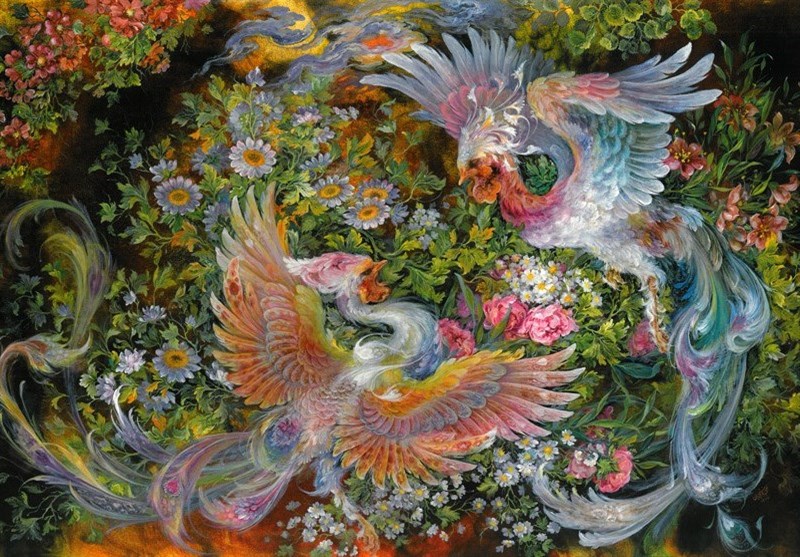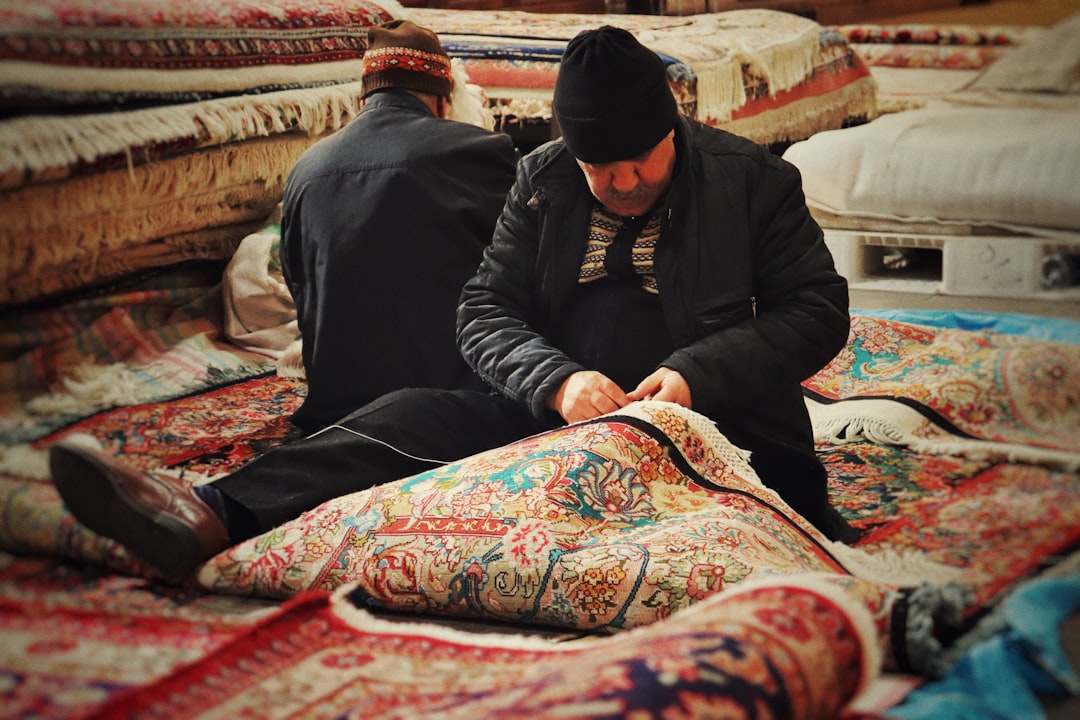In the world of art, few forms are as intricate and captivating as Persian miniatures. These tiny yet powerful paintings, born from the cultural heart of Persia (modern-day Iran), convey grand stories, historical events, and timeless beauty. Persian miniatures are revered for their exquisite detail, vibrant colors, and ability to capture the depth of human emotion within a confined frame. In this blog post, we will dive into the rich history, artistry, and significance of Persian miniatures, exploring how they have come to symbolize Persian culture and creativity.
🎨 What Are Persian Miniatures?
Persian miniatures are small, detailed paintings that emerged as a prominent art form during the Safavid dynasty (1501–1736). They were typically created in manuscripts, illustrating everything from poetry to historical events, to mythological tales. These miniature works of art were used as illustrations in illuminated manuscripts, books of poetry, religious texts, and historical chronicles.
Despite their small size, Persian miniatures are anything but simplistic. The level of detail, color, and composition packed into these pieces is truly astonishing. Artists employed fine brushes and natural pigments to bring their visions to life, focusing on creating a sense of motion, emotion, and narrative depth in each scene.
The charm of these miniatures lies in their ability to tell grand stories—whether depicting epic battles, romantic encounters, or mythological creatures—through what appears to be a tiny, delicate canvas. Their smallness contrasts with the vastness of the ideas and emotions they convey.
📜 The Origins of Persian Miniatures
The tradition of Persian miniature painting has roots that stretch back to ancient Persia, but it truly began to flourish during the Ilkhanid dynasty (1256–1335), a period when Persian artists were influenced by the Mongol Empire. Early Persian miniatures were heavily influenced by Chinese and Central Asian art styles. The arrival of the Mongols brought new techniques, and artists began to experiment with perspective, depth, and more detailed figures.
However, it was during the Safavid dynasty (16th to 18th centuries) that Persian miniatures truly reached their peak. The Shahnameh (Book of Kings) by Ferdowsi, Khosrow and Shirin by Nezami, and Divan-e-Hafez (the collected works of Hafez) were among the most common texts to be illustrated by miniature artists. The Safavid period is often regarded as a golden age for Persian miniature painting, especially under the patronage of Shah Tahmasp I, who was himself a lover of the arts and sponsored many miniature projects.
🖌️ Artistry and Techniques in Persian Miniatures
What makes Persian miniatures truly magical is their exceptional artistry and the unique techniques used by the painters. These artworks were crafted with incredible precision, using natural materials to produce stunning colors. The process of creating a Persian miniature is highly intricate, with a great deal of time and attention dedicated to every tiny detail.
Brushwork and Detail
Artists used extremely fine brushes made from squirrel hair or camel hair to achieve the intricate details in their work. They would paint with a steady hand, carefully placing each stroke to create intricate patterns and tiny figures. These delicate brushstrokes brought to life richly detailed scenes filled with elaborate costumes, swirling floral motifs, and expressive faces.
Use of Color
Color played a crucial role in Persian miniatures. Artists used a wide range of vibrant, vivid colors—many of which were derived from natural sources. The blues and greens came from lapis lazuli and malachite, while reds and yellows were derived from garnet, cinnabar, and pomegranate. These colors were often applied with a layering technique, where successive layers of paint were applied to create rich, luminous textures.
Composition and Space
While many Western paintings of the period used perspective to create a sense of depth, Persian miniatures were designed in a more two-dimensional style, where the focus was more on the beauty of the design rather than realistic spatial relationships. This design choice is often called "flatness", where figures appear in intricate, patterned compositions. Though lacking a traditional sense of perspective, Persian miniatures were exceptional in creating the illusion of motion, rhythm, and emotion.
📚 Themes and Stories in Persian Miniatures
The themes of Persian miniatures are as varied as the stories they depict. Artists drew inspiration from a range of sources, including epic literature, historical events, religious texts, and romantic tales. Let’s explore some of the most common themes in these miniature paintings:
Epic Narratives and Historical Events
One of the primary themes in Persian miniatures is the depiction of epic stories, particularly from the Shahnameh by Ferdowsi. This monumental Persian epic chronicles the history of the Persian kings and the struggles of legendary heroes like Rostam. In many Persian miniatures, we see warriors engaged in epic battles, chivalric deeds, and mythological events. The scenes are often filled with vivid colors, showing great action and emotion.
Romantic Stories
Another common theme is romantic love, as seen in the works of poets like Nezami. Stories like Khosrow and Shirin and Layla and Majnun have been frequently depicted in miniature paintings. These paintings often show lovers in an idealized, utopian world—surrounded by lush landscapes, delicate flowers, and serene figures. Persian miniatures bring the dreamy, emotional nature of these stories to life, capturing the passion, longing, and beauty of love.
Religious and Mystical Themes
Persian miniatures also frequently depict religious themes, especially from Sufism. Sufi mystics, with their focus on the divine and the soul’s connection to God, were often portrayed in these tiny works of art. Divine figures, angels, and symbols of mystical experiences such as the Simurgh (a mythical bird) were painted to illustrate the connection between the material and the spiritual world.
🖼️ Famous Persian Miniature Artists
Some Persian miniature artists have become legends in their own right, known for their mastery and impact on the art form.
-
Bihzad (c. 1450–1535), an artist from Herat, is considered one of the greatest masters of Persian miniature painting. His style is renowned for its delicate figures, refined use of color, and subtle emotional expression.
-
Sana'i (c. 1580–1645) was another famous painter known for his work during the Safavid period. His paintings often depict religious and mystical themes, showcasing his skill in blending spiritual elements with earthly beauty.
-
Reza Abbasi (c. 1565–1635) is celebrated for his distinctive approach to Persian miniature painting, which combined traditional techniques with a more simplified, elegant style. His works depict scenes from royal courts, mythology, and daily life.
🌍 The Global Influence of Persian Miniatures
While Persian miniatures were originally created for the Persian aristocracy, they soon garnered attention far beyond Persia. The Mughal Empire in India, particularly under Emperor Akbar, adopted the Persian style of miniature painting and developed it further, resulting in Mughal miniatures that often blended Persian techniques with Indian themes.
In the West, Persian miniatures caught the eye of collectors and artists during the 18th century and became a key influence on European art, particularly during the Rococo period. Today, these miniatures continue to inspire artists and art lovers, as their detailed storytelling and delicate craftsmanship remain timeless.
🎉 Conclusion: The Lasting Beauty of Persian Miniatures
Persian miniatures are much more than tiny paintings; they are windows into a world of rich culture, history, and imagination. Through their intricate designs and vivid storytelling, Persian miniatures offer a glimpse into the soul of Persian civilization—capturing moments of love, heroism, spirituality, and life in minute detail. These small masterpieces continue to enchant and inspire, standing as a testament to the enduring legacy of Persian art.
Whether displayed in museums, art collections, or as part of private collections, Persian miniatures are truly grand stories in small frames, inviting viewers to immerse themselves in a world of color, beauty, and narrative richness.





